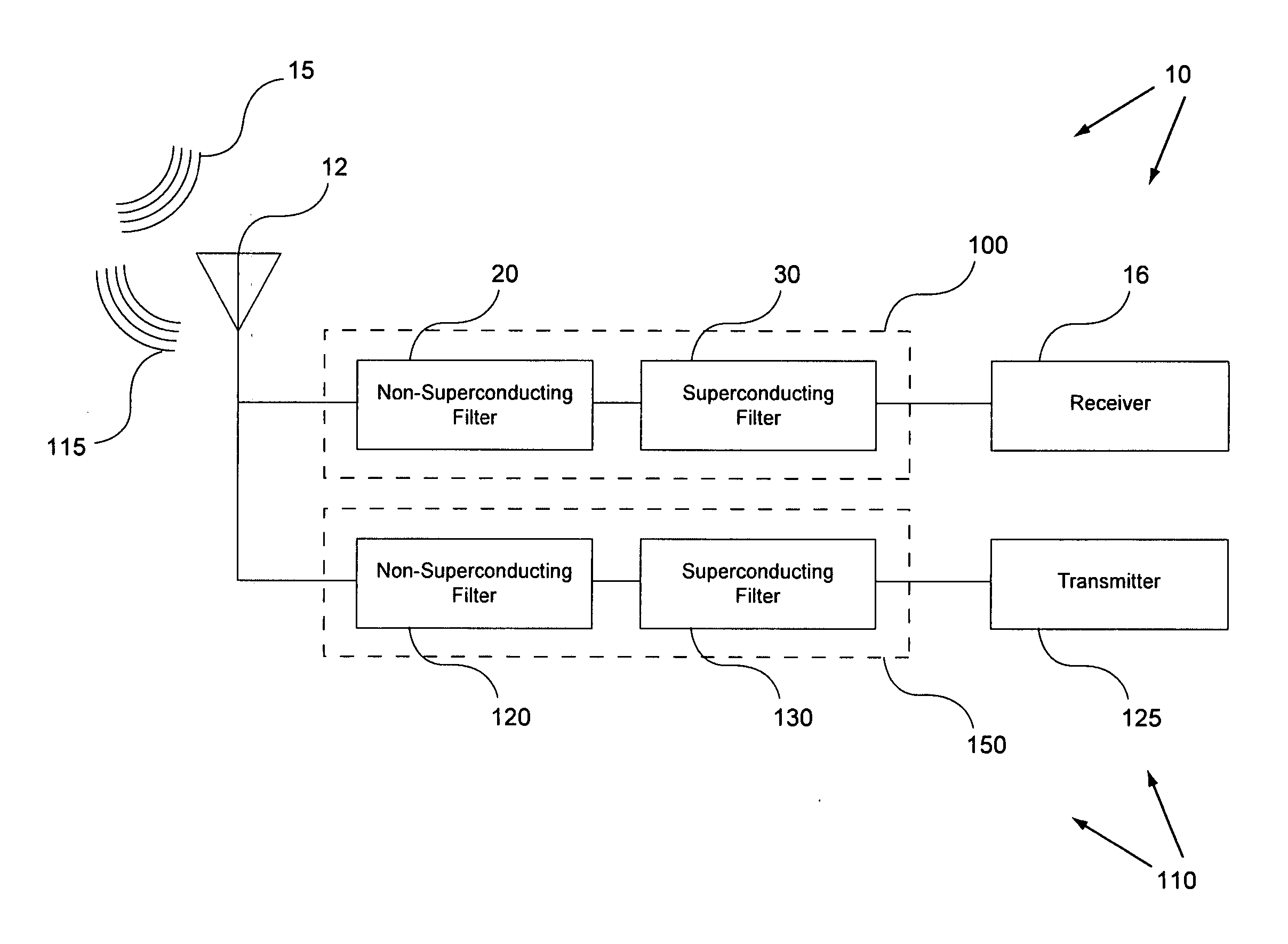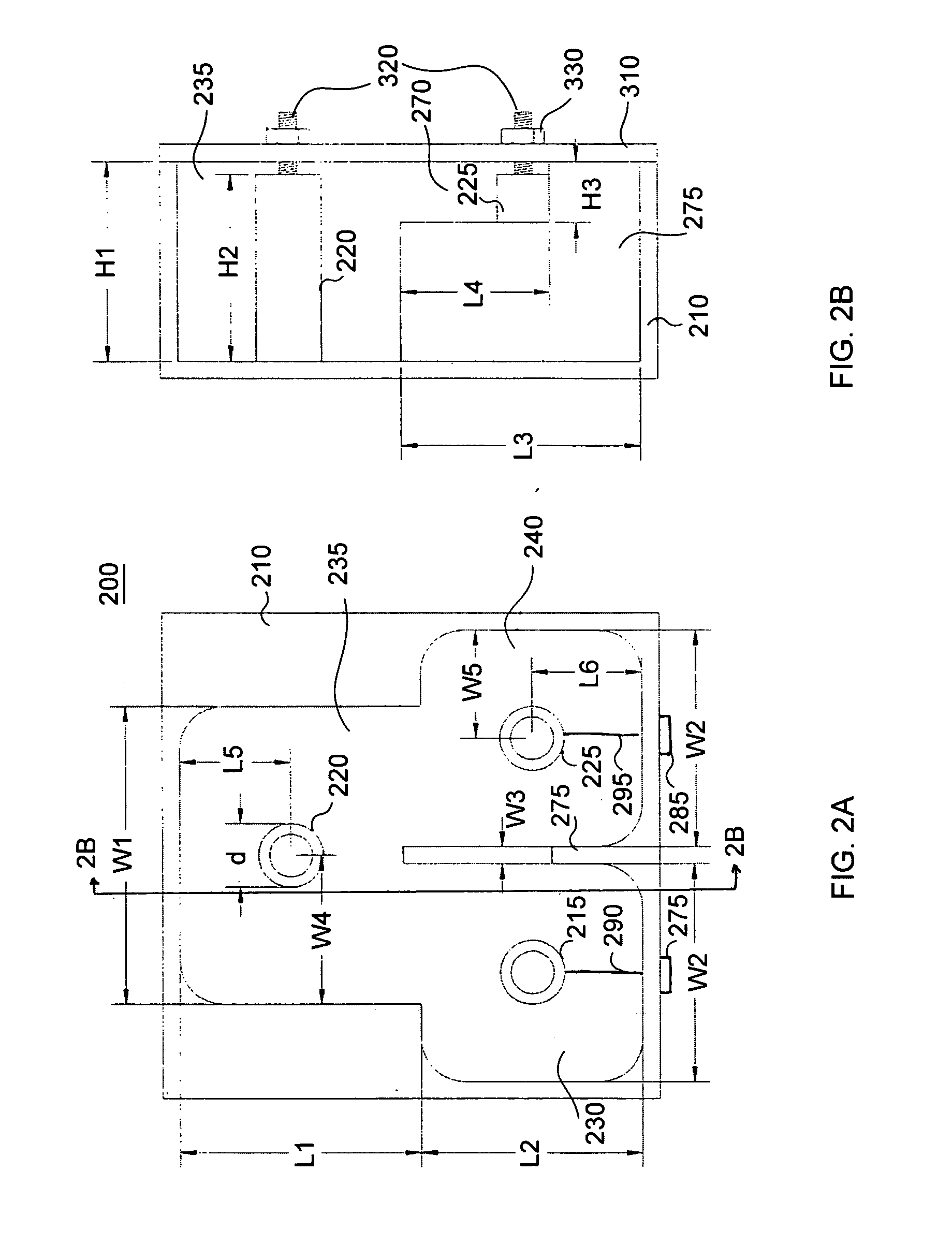Systems and methods for signal filtering
- Summary
- Abstract
- Description
- Claims
- Application Information
AI Technical Summary
Benefits of technology
Problems solved by technology
Method used
Image
Examples
Embodiment Construction
[0035] In general, the present invention is directed generally to providing systems and methods for designing an electronic communication system having improved signal filtering that may include, for example, one or more receiver(s), transmitter(s), and / or transceiver(s) having one or more signal amplifier(s) and / or signal filter(s). More particularly, the present invention is believed to be applicable to a variety of radio frequency (RF) applications in which achieving low insertion loss in the pass band with high attenuation in the stop band, and an extremely high degree of selectivity in the pass band are necessary. The present invention is particularly applicable and beneficial for cellular-communication base stations, and other communication applications. While the present invention is not so limited, an appreciation of the present invention is best presented by way of a particular example application, in this instance, in the context of such a communication system.
[0036] Now ...
PUM
 Login to View More
Login to View More Abstract
Description
Claims
Application Information
 Login to View More
Login to View More - R&D
- Intellectual Property
- Life Sciences
- Materials
- Tech Scout
- Unparalleled Data Quality
- Higher Quality Content
- 60% Fewer Hallucinations
Browse by: Latest US Patents, China's latest patents, Technical Efficacy Thesaurus, Application Domain, Technology Topic, Popular Technical Reports.
© 2025 PatSnap. All rights reserved.Legal|Privacy policy|Modern Slavery Act Transparency Statement|Sitemap|About US| Contact US: help@patsnap.com



